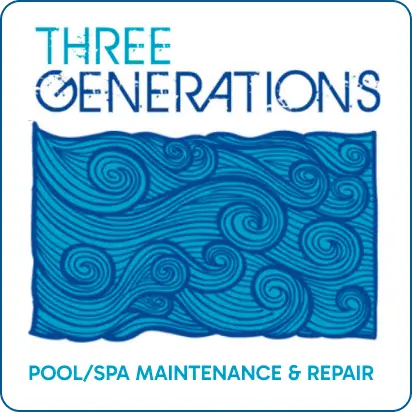When it comes to taking care of your pool, there are two extremely important factors that need to be maintained in order to achieve a swimming pool with balanced water that is safe to swim in – the pH levels and alkalinity. Each of these plays a significant role in the quality of your pool’s water and sanitation.
In this guide, you’ll learn how to ensure your PH and alkalinity levels are healthy and how to lower or raise the levels if needed.
What is pH?
pH is a measure of the pool water’s acidity on a scale of 0 to 14. If pool water has a pH of 7, it is considered neutral (and therefore healthy and sanitary in terms of pH levels). If the pool water is below 7, it is considered to have too much acidity. If the pH is above 7 it is considered to have alkalinity. The ideal pH range is between 7.2 and 7.6.
When pH levels are too high or too low, it can cause eye and skin irritation, the pool water might become contaminated and no longer safe to swim in and pool equipment can become eroded (such as pumps and filters). Additionally, it could lead to cloudy pool water.
How to lower pH levels in your pool
If swimming pools have a high pH, which is above 7.6, you’ll need to lower the pH level.
The ideal range of pH in a pool is between 7.2 and 7.6. To do so, visit a local pool supply store and select a substance with muriatic acid, also known as hydrochloric acid. You can also consider using sodium bisulfate, known as dry acid. These substances are known for being able to effectively lower the pH of the pool water.
When lowering pool pH levels, you never want to add alkaline substances, as this will lead to a pH increase. You might also be able to use a carbon dioxide injection to lower the pH, however, it’s best to consult with an expert before doing so.
Before adding any substance to the pool, follow the instructions on the packaging. You will most likely need to dilute the substance by adding the acid to water (note: do not add water to the acid, since this can potentially cause injury by splashing).
Distribute the solution to the pool water, slowly pouring it throughout the pool. After adding it to the pool, turn the pool pump on for at least one hour to help the acid circulate.
The next day, test the pH levels again to ensure it’s within the desired range. If the pH in your pool is still too high, you’ll need to follow the above steps again until the pool water gets between 7.2 and 7.6.
How to raise pH levels in your pool
To raise the pool’s pH level, test the pH first and check the overall pool pH balance. Similar to the above, you want to use a reliable pool water testing kit to check your current pH levels. The ideal range is between 7.2 and 7.6. If your pool water levels fall below 7.2, it’s considered a low pH and you’ll need to raise the levels using a pH increaser.
Specifically, you’ll need to add a substance that consists of sodium carbonate (soda ash) and sodium bicarbonate (baking soda). You can purchase the necessary items at a pool supply store. However, it’s important to keep in mind that by raising the pH levels in the pool, you’ll also be raising the alkalinity levels.
Follow the instructions on the packaging when adding the sodium carbonate and sodium bicarbonate to the pool water. Make sure to distribute the solutions evenly throughout the pool, preferably along the edges.
It’s best to run the pool pump and circulation system for an hour after the solutions have been added so that they can spread throughout the pool.
After 2 to 3 days, test the pH levels to ensure they have reached the optimal range. If the levels are still too low, repeat the above steps as needed.

What is Alkalinity?
Alkalinity is the pool water’s ability to resist changes in pH, essentially serving as a way to help stabilize pH levels and the overall pool chemistry. The ideal alkalinity range is between 80 and 120 parts per million (ppm), with anything below 80 ppm to be considered low alkalinity and anything above 120 ppm to be high alkalinity.
If alkalinity falls outside of this range, it’s easier for pH levels to drastically change, which can happen as a result of people swimming or external factors such as rain or chemical treatments. Alkalinity also helps to prevent pool chemical treatments from damaging equipment, including pool surfaces.
Having pool water with both alkalinity and pH levels within the ideal ranges is very important so that anyone using your pool can do so safely, without affecting their health.
How to lower Alkalinity in your pool
The ideal range for pool water alkalinity is between 80 and 120 parts per million (ppm). Test the alkalinity using a pool water testing kit, and if your results are above 120 ppm, you’ll need to lower the alkalinity.
Lowering alkalinity can be done by adding acid to the pool water, which is typically muriatic acid, also known as hydrochloric acid. You should consult with a professional to determine the exact amount of acid needed.
Before adding the acid to the pool, pour the acid into some water from the pool (note: do not pour water into the acid, and this can cause splashing which can result in injury). Once the acid has been poured into a small amount of pool water, add the solution to the pool. Try to distribute it evenly throughout the pool.
When you’re done pouring, make sure to turn on the pool pump for at least one hour so that the acid can take its effect throughout the pool.
The next day, retest the alkalinity. If it’s still above 120 ppm, follow the above-mentioned steps again until it reaches the appropriate range.
How to raise Alkalinity in your pool
You should raise alkalinity in the pool if the pool alkalinity levels are below 80 ppm. Before adding any substance to the pool, make sure to test the alkalinity first. After doing so, if the levels are too low you’ll need to add baking soda, also known as sodium bicarbonate. Speak with an expert to determine how much baking soda you need to add. This will depend on the exact size of your pool.
You might need to add water to the baking soda before pouring it into the pool. After doing so, pour the baking soda on the outside rim of the pool.
After pouring, turn on the pool pump so that the baking soda can take effect throughout the entire pool.
The next day, retest the pool’s alkalinity. The alkalinity level should now be higher and at an appropriate level, since baking soda works as a natural alkalinity increaser. However, if the total alkalinity level is still not between 80 and 120 ppm, you will need to repeat the above steps.
Expert pool technician bonus tips:
- If you plan on adjusting the pH levels and alkalinity in your pool, always make sure to wear appropriate protective gear. This can include safety goggles and gloves.
- Avoid mixing pool chemicals, as this can be very dangerous.
- If you aren’t familiar with how to safely maintain and care for your pool, it’s best to consult with a professional who specializes in pool maintenance.



